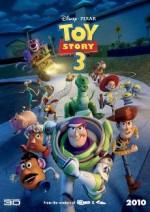FYS service learning students get dirty
Every Fall for the past seven years Professor William Kuehn has lead his First Year Seminar students to the Helen W. Buckner Memorial Preserve at Bald Mountain in West Haven, Vt. to complete the class’ Service Learning project. The preserve is one of the most ecologically diverse areas in the state and the place where Kuehn’s class applies the research methods they learn in the classroom to the real world.”Sociology is learning about people. What they do and maybe why the do it,” said Kuehn, a longtime sociology professor at Castleton.
What people tend to do at the Buckner Preserve, a remote area of the woods at the end of a little known dead-end road, is dump trash.
“We find a lot of everything,” Kuehn said. “Household trash, party litter, construction debris and fast food litter.”
It’s not always pretty.
“It’s sometimes disturbing and gross,” said Lani Willard, a senior at Castleton and Kuehn’s SOS leader. “There was one thing, it was so gross I couldn’t even get that close. Someone had killed a deer taken all the inside stuff out and put it into a plastic trash bag. And it wasn’t just deer parts, there were ketchup and mustard bottles hangin’ out in the bag.”
The students pick up the trash and dispose of it properly — no matter how unpleasant.
“Diapers,” said Zach Hertzberg a freshman. “Diapers were terrible. We had to pick up about 100 that had just been dumped over the bank.”
For most students, the pollution and illegal dumping at the preserve is unexpected.
“I didn’t know that that kind of stuff happened here,” Hertzberg said. “I’m from New Jersey- I’ve seen garbage – but Vermont is all into nature. It was a surprise.”
McKenzie Works, a freshman from Nebraska agrees.
“My expectations weren’t as low as they should have been,” Works said. “I’d expected stuff like candy wrappers, not old TV’s and deer carcasses.”
Once the students have been to the preserve and done their part to clean up the litter, they are asked to reflect and reach conclusions.
The objective of the class is to apply research methods to their experience at the preserve, Kuehn said. The class looks at what they found, categorizes it, and determines who dumped it.
Then they look forward at ways to prevent further dumping.
They concluded that local people do the most dumping and it tends to be those who can’t afford to trash removal, according to Kuehn.
Over the years, classes have been a factor in increasing signage at the preserve and environmental design, like moving rocks to restrict access to certain places by vehicle.
For McKenzie Works, education is an important factor as well.
“We are being educated through FYS, but elementary kids should go to the preserve at a young age and learn to respect the area,” Works said. “The preserve is there for a reason – for people to enjoy – you’d think the community would respect that.”
Awareness, according to Murry McHugh, the Land Steward at the Nature Conservancy of Vermont who worked with Kuehn’s class, is a great way to tackle environmental issues and a benefit of the project.
“It’s a great way to engage people in the community and it’s eye opening for the students,” McHugh said. “They have to pick up what people dump and that experience has a direct impact on their understanding and they realize how awful littering and pollution are.”
Students present their ideas and conclusions at a lunch attended by members of the college and the Nature Conservancy of Vermont.
McHugh said student results don’t often lead to ‘concrete actions,’ but not because their points aren’t valid, it’s the issue’s complexity.
“It’s a very challenging issue and there’s not a lot we feel we can actually do,” McHugh said. “But the ideas do give us ideas about how we can gauge attitudes and look at the problem.”
The seclusion of the area makes it hard to catch litterers or enforce laws there. Cost of trash removal, a huge factor behind why people leave trash, is a municipality issue, one the Conservancy can’t resolve.
Although the problem has not been completely solved, the class’s involvement does help.
“Working with the college is a huge benefit to the Conservancy. Constantly cleaning the area has an impact,” McHugh said.
Impacting the community is the goal of the Service Learning component of First Year Seminar. And in that regard Willard, the class’ SOS leader, sees the work they class does as a success.
“Students were hesitant at first about going out and picking up garbage,” Willard said. “But they got passionate about it and more involved. From the first time to the last, they were more prepared and ready to get in there and get the place cleaned up.






